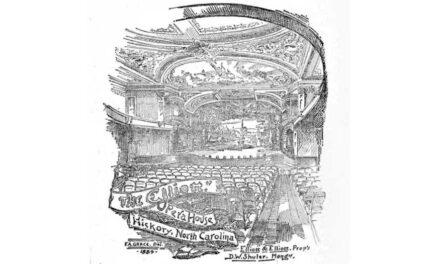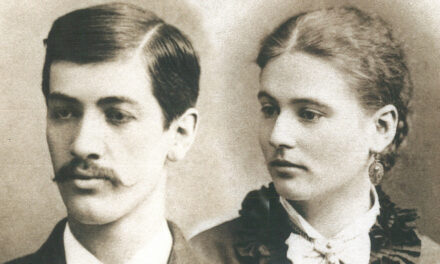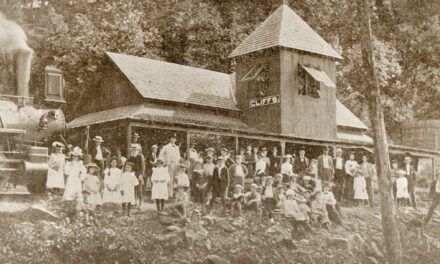
“There could have been no City of Hickory without the Western North Carolina Railroad (now the Southern) – and there could have been no railroad here without Asheville as an objective point,” observed a former resident described as an “old timer.”
No matter what the quoted senior citizen might also have said about the world going to hell in a hand basket, the youth of today not having the brains to take over or whatever, he was right about his take on Hickory. Had the line not come through, the city might be the size of (pick your small town of choice here).
The coming of the rail line just before the Civil War put the town on the map, turning a tavern stopover into a thriving commercial center, centrally located and ready for business. What might seem “well crafted” in hindsight was to some degree, happenstance and the luck of geography. The ridge line that extends southwest out of Statesville was perfect for building a rail line that needed land as flat as it could get. Fortunately, Hickory fell along that path, inching upward toward the mountains but not there yet. When the city incorporated in 1870, it was as close as many could get to spending the summer in the mountains. Even those who wanted to venture a little farther, say the eight mile buggy ride to Catawba Springs, used the train to get to Hickory first.
It would take a full decade after Hickory incorporated before rail service extended to Asheville. Yes, “The Land of the Sky” was a destination even then, and like the old timer said, every town and burg below was just a stopover on the way there. If you’ve ever taken a ride to Asheville, you know how formidable the mountains are getting there. Once rail service was established, a train had to go through eleven tunnels as it bounded westward. The one at Swannanoa totaled a quarter mile in length.
Along the way, the mix of passengers and freight stopped anywhere there wasn’t a wilderness on each side of the tracks. Icard, Drexel (after 1903), Glen Alpine were all stops along the way. Hickory served as a junction for two railroad lines by the 1870s. The east-west standard gauge had a third rail to accommodate the Chester and Lenoir Narrow Gauge.
As late as the early 1970s, train traffic dominated activity on Union Square. In addition to the passenger depot (the third incarnation & the one still standing) was an imposing two-story freight station and multiple trackage, making it hard to get around downtown. By then, railroads were considered a nuisance, even though as my friend and train historian, the late Matt Bumgarner once told me during an interview, trains were hauling more than ever and thus, more important than ever.
Trains don’t travel through downtown Hickory as they once did. When they do, people complain about the hold up. But whatever the inconvenience, had it not been for the railroad, driving through what is now Hickory might be much more a rural experience than an urban one, had the train never come through.
Photo: Always a big moment in Hickory from the days of the old timers, when the passenger train pulled into the station. Image courtesy of the City of Hickory.








